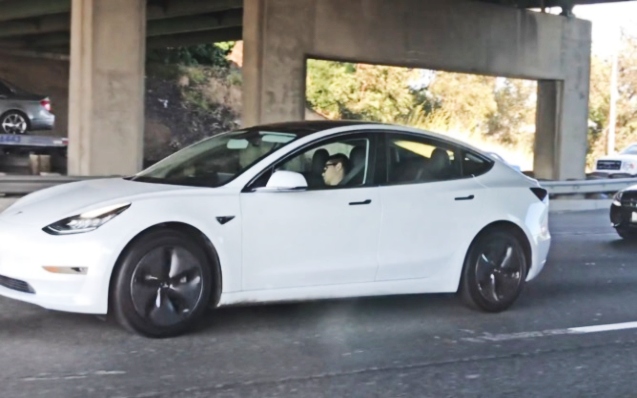Sleeping While Driving in California - Is it Legal?
Posted on 17th February, 2023

As automakers work towards fully autonomous vehicles, some vehicle owners have already opted to fall asleep behind the wheel. Within the last few weeks, two drivers have been caught on camera sleeping behind the wheel of their Teslas. Let's be honest; with two caught on camera, there are likely many more who are doing this.
So is it safe, or is it even legal?
As far as it being safe, experts are still deciding. Many argue that the technology equipped in Tesla's autopilot is not ready for owners to assume their car can drive itself. In fact, despite the continued advancement of this technology, it is agreed that autopilot doesn't remove responsibility from the driver when it comes to safe driving.
Tesla warns drivers to stay alert and be ready to take control of the car at all times, which would clearly rule out the idea of sleeping behind the wheel as an option.
Is it legal? Laws are created in the aftermath of change within society. As of now, California Vehicle Code Section 23103 speaks of Reckless driving. It makes it illegal to drive a vehicle with willful or wanton disregard for people's or property's safety. If a person does so willingly, they can be guilty of reckless driving.
The code could be applied to driving while drowsy and could apply to situations like those Tesla drivers mentioned herein. California Highway Patrol was interviewed on the scenario, and they argued that sleeping behind the wheel of your self-driving vehicle is taking unnecessary risk behind the wheel. The action potentially puts the lives of others in danger and, therefore, can be considered driving recklessly. In an interview with Fox40, CHP stated, "Regardless of any special features a vehicle may possess...drivers are still responsible for the vehicle they are operating." The spokesman of CHP added that if a driver is found asleep behind the wheel, they are violating California's basic speed law.
We asked our attorney, John M. O'Brien, to weigh in on the matter. He stated the following: "A finding of negligence in a civil action only requires that the driver did not act reasonably with regard to the safety of other drivers. Falling asleep while driving, intentional or otherwise, is dangerous and unreasonable given the current state of technology for ''self-driving cars.'' If you do it and you hurt somebody, you'll likely be held responsible for their harm."
Whether using autopilot or not, the safest way to drive is when a driver is vigilant and awake. The CDC reported drowsy driving was involved in 91,000 crashes in 2017-resulting in about 50,000 injuries and nearly 800 deaths. Sadly, these numbers are underestimated, and there are over 6,000 fatal crashes each year that may involve a drowsy driver. So who's at greater risk of drowsy driving?
- Young adults and teens who underrate their alertness or a trip's length.
- Drivers on the road in the early morning, such as before 6 a.m.
- Drivers who don't get enough sleep or have untreated sleep disorders.
- Workers who work long shifts, such as commercial truck drivers.
- Drivers who use medication that has the side-effect of drowsiness.
Identify the warning signs of drowsy driving:
- Yawning or blinking frequently.
- Trouble concentrating.
- Inability to remember the last few miles driven.
- Missing your exit.
- Drifting out of your lane.
Never Drive Drowsy
You may think you can stop yourself from falling asleep while driving drowsy, but you can't. The reality is you may not even know you've dozed off. Remember, although driving is a commonplace thing to do in society - driving always comes with risks. Therefore, minimize these as much as possible, especially if it is within your power. Only drive when you are well rested, plan for occurrences of being tired, develop good sleeping habits, and if needed - pull over and rest when on a long journey. Driving drowsy isn't worth the risk to yourself or others around you.
